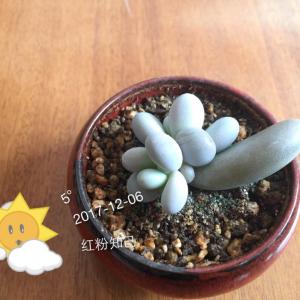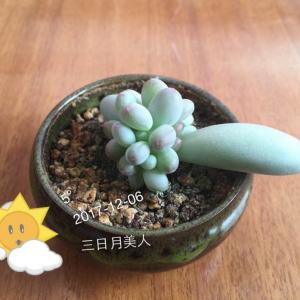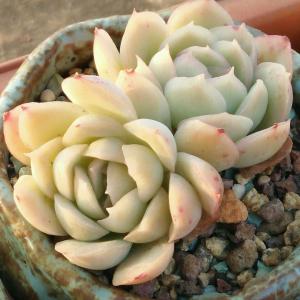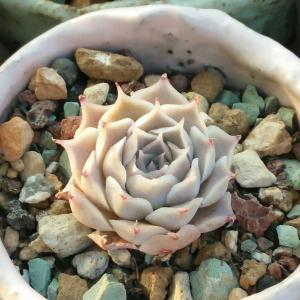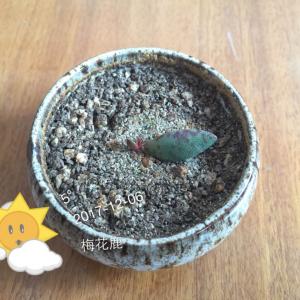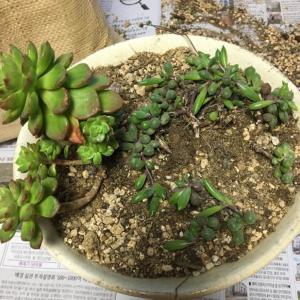文章
Miss Chen
2017年12月13日

Description: This perennial wildflower is 1½–3' tall, producing one or more unbranched stems at the base that are erect to ascending. The stems are light green to reddish green and glabrous to densely pubescent. Along each stem, there are numerous alternate leaves that are ascending to widely spreading. Individual leaves are 2-6" long and 1/8-1/2" (3-12 mm.) across; they are linear to linear-lanceolate and smooth along their margins. Their upper surfaces are medium green and glabrous. The leaves often curve upward along their central veins. The petioles of the leaves are about ¼" long and light green. Globoid umbels of greenish white flowers about 1½-2" across develop from the axils of the middle to upper leaves (one umbel per leaf). Each umbel has 30-100 flowers on pedicels about ½-¾" long. The slender pedicels are light green and pubescent. Individual flowers are about 1/8" (3 mm.) across and 1/4" (6 mm.) long. Each flower has 5 sepals, a corolla with 5 narrow lobes, 5 upright hoods without horns, and a short central column containing the reproductive organs. The lobes of the corolla hang downward from the face of the flower (pointing toward the center of the umbel). The lobes are mostly greenish white, although they become purplish toward their tips. The peduncles of the umbels are about 1-1½" long, light green, and pubescent. The blooming period occurs from mid- to late summer and lasts about 2 months. Fertile flowers develop into follicles (seedpods that split open along one side) about 4-5" long and up to ½" across that are narrowly lanceoloid in shape. The surface of each follicle is canescent and smooth. Each follicle contain numerous seeds with tufts of white hair that are released to the wind at maturity. The root system consists of a taproot. This wildflower spreads by reseeding itself.
Cultivation: The preference is full sun, moist to dry conditions, and sandy or gravelly soil. Soil containing loam or clay-loam is also tolerated.
Range & Habitat: Tall Green Milkweed is occasional throughout Illinois. It is a native herbaceous plant. Habitats include dry-mesic railroad prairies, sand prairies, rocky glades, edges of sandy wetlands, roadsides, pastures, and abandoned fields. This milkweed can be found in both high quality habitats and disturbed areas that are sunny.
Faunal Associations: The flowers of Tall Green Milkweed are cross-pollinated primarily by long-tongued bees and wasps. Bee visitors include honeybees, bumblebees, and leaf-cutting bees (Megachile spp.). To a lesser extent, the flowers also attractsmall butterflies and day-flying moths (e.g., Cisseps fulvicollis). These insects obtain nectar from the flowers. Milkweeds attract a special group of insects that are oligophagous on various parts of these plants. These insect feeders include caterpillars of the butterfly Danaus plexippus (Monarch) and caterpillars of the moths Cycnia inopinatus (Unexpected Cycnia), Cycnia tenera (Delicate Cycnia), and Euchaetes egle (Milkweed Tiger Moth). Some of these moths seem to prefer some Asclepias spp. over others. The larvae of some long-horned beetles bore through the stems and roots of milkweeds, specifically: Tetraopes tetrophthalmus (Red Milkweed Beetle), Tetraopes femoratus (Large Red Milkweed Beetle), and Tetraopes quinquemaculatus. This last species has been found on Tall Green Milkweed. When the follicles of milkweeds are present, the seeds are eaten by Lygaeus kalmii (Small Milkweed Bug) and Oncopeltus fasciatus (Large Milkweed Bug). Occasionally, aphids are found on the upper stems and leaf undersides; these species include Aphis asclepiadis, Myzocallis asclepiadis, Myzocallis punctatus, and Aphis nerii (Introduced Milkweed Aphid). Because the milky latex of the leaves and stems contain cardiac glycosides and possess a bitter flavor, they are usually avoided by mammalian herbivores. The White-Footed Mouse eats the seeds of milkweeds to a minor extent, while the Eastern Goldfinch uses the silky hairs of the seeds in the construction of its nests.
Photographic Location: A prairie in Fayette County, Illinois. The photograph of the flowering plant was taken by Keith & Patty Horn (Copyright © 2009). A caterpillar of the Monarch butterfly is conspicuous in this photo.
Comments: Tall Green Milkweed is one of the lesser known species of milkweed that is occasionally found in upland prairies. It is distinguished primarily by its greenish white umbels of flowers, lack of horns in the hoods of the flowers, and narrow alternate leaves. It also produces more umbels of flowers per plant than most milkweeds. Other milkweeds usually have opposite leaves. A somewhat similar species, Asclepias viridiflora (Short Green Milkweed), is a shorter plant with pairs of opposite leaves. It produces only 1-2 umbels of flowers that nod downward. Another similar species, Asclepias verticillata (Whorled Milkweed), is a smaller plant with whorls of grass-like leaves; these leaves are more narrow (filiform-linear) than those of Tall Green Milkweed.
Cultivation: The preference is full sun, moist to dry conditions, and sandy or gravelly soil. Soil containing loam or clay-loam is also tolerated.
Range & Habitat: Tall Green Milkweed is occasional throughout Illinois. It is a native herbaceous plant. Habitats include dry-mesic railroad prairies, sand prairies, rocky glades, edges of sandy wetlands, roadsides, pastures, and abandoned fields. This milkweed can be found in both high quality habitats and disturbed areas that are sunny.
Faunal Associations: The flowers of Tall Green Milkweed are cross-pollinated primarily by long-tongued bees and wasps. Bee visitors include honeybees, bumblebees, and leaf-cutting bees (Megachile spp.). To a lesser extent, the flowers also attractsmall butterflies and day-flying moths (e.g., Cisseps fulvicollis). These insects obtain nectar from the flowers. Milkweeds attract a special group of insects that are oligophagous on various parts of these plants. These insect feeders include caterpillars of the butterfly Danaus plexippus (Monarch) and caterpillars of the moths Cycnia inopinatus (Unexpected Cycnia), Cycnia tenera (Delicate Cycnia), and Euchaetes egle (Milkweed Tiger Moth). Some of these moths seem to prefer some Asclepias spp. over others. The larvae of some long-horned beetles bore through the stems and roots of milkweeds, specifically: Tetraopes tetrophthalmus (Red Milkweed Beetle), Tetraopes femoratus (Large Red Milkweed Beetle), and Tetraopes quinquemaculatus. This last species has been found on Tall Green Milkweed. When the follicles of milkweeds are present, the seeds are eaten by Lygaeus kalmii (Small Milkweed Bug) and Oncopeltus fasciatus (Large Milkweed Bug). Occasionally, aphids are found on the upper stems and leaf undersides; these species include Aphis asclepiadis, Myzocallis asclepiadis, Myzocallis punctatus, and Aphis nerii (Introduced Milkweed Aphid). Because the milky latex of the leaves and stems contain cardiac glycosides and possess a bitter flavor, they are usually avoided by mammalian herbivores. The White-Footed Mouse eats the seeds of milkweeds to a minor extent, while the Eastern Goldfinch uses the silky hairs of the seeds in the construction of its nests.
Photographic Location: A prairie in Fayette County, Illinois. The photograph of the flowering plant was taken by Keith & Patty Horn (Copyright © 2009). A caterpillar of the Monarch butterfly is conspicuous in this photo.
Comments: Tall Green Milkweed is one of the lesser known species of milkweed that is occasionally found in upland prairies. It is distinguished primarily by its greenish white umbels of flowers, lack of horns in the hoods of the flowers, and narrow alternate leaves. It also produces more umbels of flowers per plant than most milkweeds. Other milkweeds usually have opposite leaves. A somewhat similar species, Asclepias viridiflora (Short Green Milkweed), is a shorter plant with pairs of opposite leaves. It produces only 1-2 umbels of flowers that nod downward. Another similar species, Asclepias verticillata (Whorled Milkweed), is a smaller plant with whorls of grass-like leaves; these leaves are more narrow (filiform-linear) than those of Tall Green Milkweed.
0
0
文章
Miss Chen
2017年12月13日

Description: This perennial plant becomes about 2-3' tall when it is mature, branching occasionally in the upper half. The stems are covered in a dense mat of short white hairs. The alternate leaves are up to 3½" long and 1" across. They are usually oblanceolate, narrowly ovate, or linear. The lower leaves may have a few lobes or coarse teeth towards their tips, while the upper leaves have smooth margins. Like the stems, the leaves have a dense mat of short white hairs, especially on the lower surface. This variety of White Sage has dense white hairs on the upper surface of the leaves as well, except for the oldest leaves toward the bottom of the plant. The leaves are sessile against the stem, or have short petioles. Some of the upper stems terminate in elongated spikes or narrow racemes of compound flowers. Each flowerhead is only 1/8" (3 mm.) across, and contains numerous whitish green disk florets that are inconspicuous. The blooming period is late summer to early fall, and lasts about 2-3 weeks. There is no floral scent, although the foliage of this plant is quite aromatic. Pollination is by wind, rather than insects. The tiny seeds are without tufts of hair, but are small enough to be distributed by the wind. The root system is rhizomatous, and can form a dense mat of roots near the surface of the ground. As a result, this plant has a strong tendency to form clonal colonies that exclude other plants.

Cultivation: The preference is full sun and dry conditions. Poor soil containing hardpan clay, rocky material, or sand is actually preferred as a medium for growth, as this reduces competition from other plants. The foliage is very attractive and doesn't have significant problems with disease. This plant can spread aggressively in some situations.
Range & Habitat: White Sage is occasional in northern and western Illinois, but rare or absent in other parts of the state (see Distribution Map). Some authorities think this plant is native to Illinois (e.g., Britton & Brown), while others believe it is adventive from the west (e.g., Mohlenbrock). It is usually found along railroads and roadsides, and sometimes in dry upland areas of prairies. Cultivated forms of this plant can be found in flower gardens because of the attractive foliage. If this plant is native, Illinois would be at the eastern boundary of its distribution.
Faunal Associations: The flowers don't attract insects because they are wind-pollinated. White Sage has the potential to cause allergies in humans because of this pollen, but this species isn't very common within the state. Several grasshopper species feed on the foliage of White Sage (see Grasshopper Table), including an uncommon oligolectic grasshopper, Hypochlora alba (Cudweed Grasshopper), which often feeds hides in the foliage during the day. Other insect feeders include Ophraella artemisiae (Leaf Beetle sp.), Macrosiphoniella ludovicianae (Aphid sp.), and the larvae of Phaneta argenticostana (Tortricid Moth sp.); the moth larvae feed on the seedheads. Mammalian herbivores don't consume this plant because the aromatic foliage has a bitter taste. The seeds are too small to be of much interest to birds.
Photographic Location: The photographs were taken at Meadowbrook Park in Urbana, Illinois, where a small colony of plants was located in a restored prairie. The plants were not in bloom.
Comments: This variety of White Sage has striking foliage. The typical variety, Artemisia ludoviciana ludoviciana, has greener foliage with fewer white hairs. The leaves of this latter variety are supposed to be broader and more likely to have lobes or serrated margins toward the leaf tips. However, the hairiness and shape of the leaves can be rather variable for this species, regardless of the variety. Other Artemisia spp. have foliage that is more green and pinnately lobed. A few species, such as the introduced Artemisia vulgaris (Mugwort), have silvery hairs on the lower surface of the leaves, but their upper surface is predominantly green.

Cultivation: The preference is full sun and dry conditions. Poor soil containing hardpan clay, rocky material, or sand is actually preferred as a medium for growth, as this reduces competition from other plants. The foliage is very attractive and doesn't have significant problems with disease. This plant can spread aggressively in some situations.
Range & Habitat: White Sage is occasional in northern and western Illinois, but rare or absent in other parts of the state (see Distribution Map). Some authorities think this plant is native to Illinois (e.g., Britton & Brown), while others believe it is adventive from the west (e.g., Mohlenbrock). It is usually found along railroads and roadsides, and sometimes in dry upland areas of prairies. Cultivated forms of this plant can be found in flower gardens because of the attractive foliage. If this plant is native, Illinois would be at the eastern boundary of its distribution.
Faunal Associations: The flowers don't attract insects because they are wind-pollinated. White Sage has the potential to cause allergies in humans because of this pollen, but this species isn't very common within the state. Several grasshopper species feed on the foliage of White Sage (see Grasshopper Table), including an uncommon oligolectic grasshopper, Hypochlora alba (Cudweed Grasshopper), which often feeds hides in the foliage during the day. Other insect feeders include Ophraella artemisiae (Leaf Beetle sp.), Macrosiphoniella ludovicianae (Aphid sp.), and the larvae of Phaneta argenticostana (Tortricid Moth sp.); the moth larvae feed on the seedheads. Mammalian herbivores don't consume this plant because the aromatic foliage has a bitter taste. The seeds are too small to be of much interest to birds.
Photographic Location: The photographs were taken at Meadowbrook Park in Urbana, Illinois, where a small colony of plants was located in a restored prairie. The plants were not in bloom.
Comments: This variety of White Sage has striking foliage. The typical variety, Artemisia ludoviciana ludoviciana, has greener foliage with fewer white hairs. The leaves of this latter variety are supposed to be broader and more likely to have lobes or serrated margins toward the leaf tips. However, the hairiness and shape of the leaves can be rather variable for this species, regardless of the variety. Other Artemisia spp. have foliage that is more green and pinnately lobed. A few species, such as the introduced Artemisia vulgaris (Mugwort), have silvery hairs on the lower surface of the leaves, but their upper surface is predominantly green.
0
0
文章
Miss Chen
2017年12月09日


玉兰性喜光,较耐寒,可露地越冬。爱干燥,忌低湿,栽植地渍水易烂根。喜肥沃、排水良好而带微酸性的砂质土壤,在弱碱性的土壤上亦可生长。在气温较高的南方,12月至翌年1月即可开花。玉兰花对有害气体的抗性较强。如将此花栽在有二氧化硫和氯气污染的工厂中,具有一定的抗性和吸硫的能力。用二氧化硫进行人工熏烟,1公斤干叶可吸硫1.6克以上。因此,玉兰是大气污染地区很好的防污染绿化树种。

玉兰冬天能开花吗
答案虽是可以,但需要人工的帮助。
玉兰的正常花期
玉兰正常的花期是在2月至3月,若养护得当,7月至9月还可以在开花一次,但每次花期只能维持10天左右。花朵的直径在10厘米至16厘米之间,底部呈淡黄色,前端呈白色,且带有阵阵香气,它的花朵是先于叶子开放,而且花形花色非常雅致清新。
什么样的环境适合玉兰冬季开花
温度:虽说玉兰可以忍受短暂的零下20度,但若想它开花,则要把温度控制在15度左右,对于南方的朋友来说,玉兰在冬季开花很容易,但对于北方的朋友来说则需要人工控制一下温度;
水分:它对水的要求虽然高,但是也怕长期过于潮湿的土壤与积水,所以只要保持土壤在微潮湿下就可以;
温度:秋冬季节环境较干燥,必须每天在植物周边进行洒水,保持一定的潮湿度有利于开花;
阳光:想让玉兰在冬季开好花,就要增加光照的时间,若不能保证全天都在阳光下生长,那么至少保证每天有6小时是在阳光下;
养分:日常肥料要及时施放,充足的养分才能维持它开出美艳的花朵,同时在花期内约5天至7天施一次肥。
1
1








